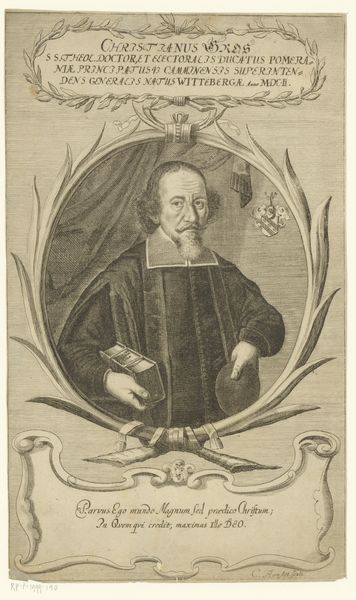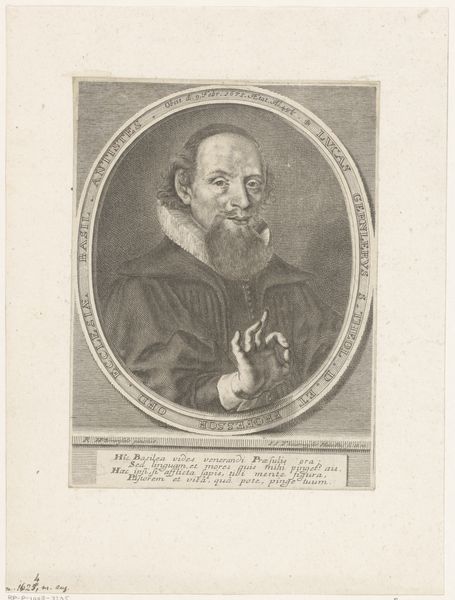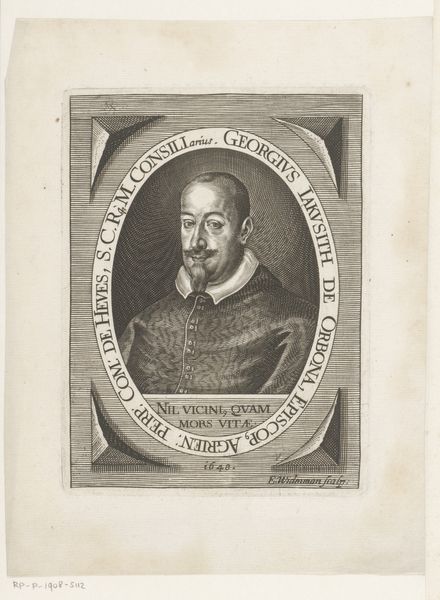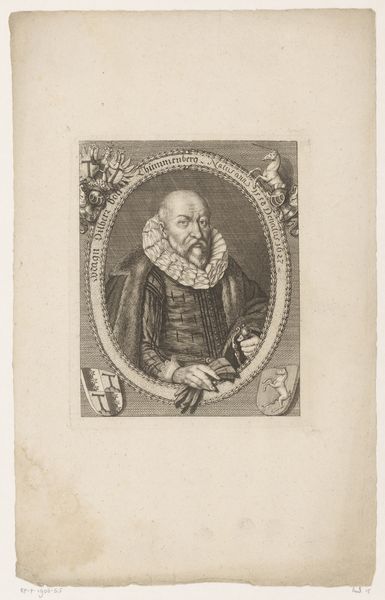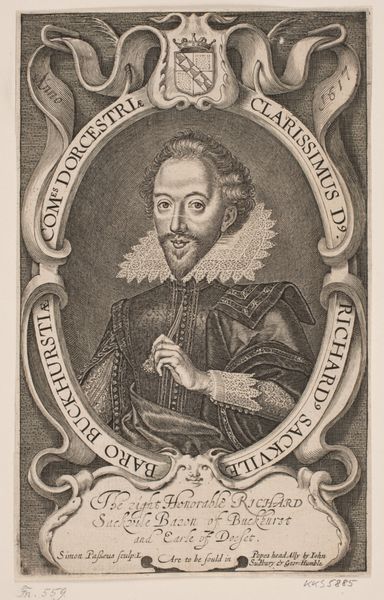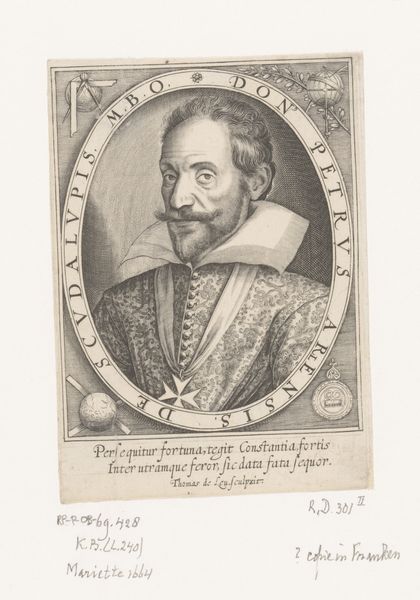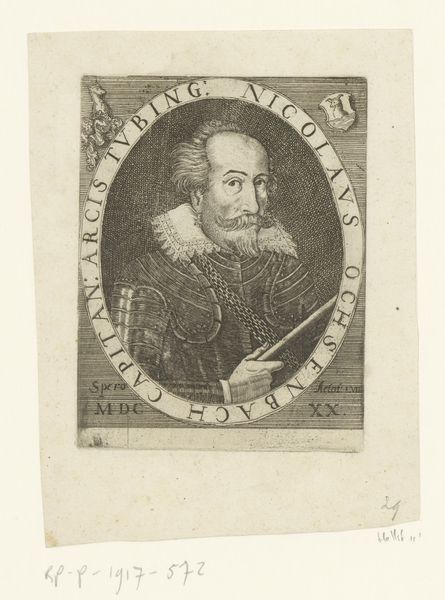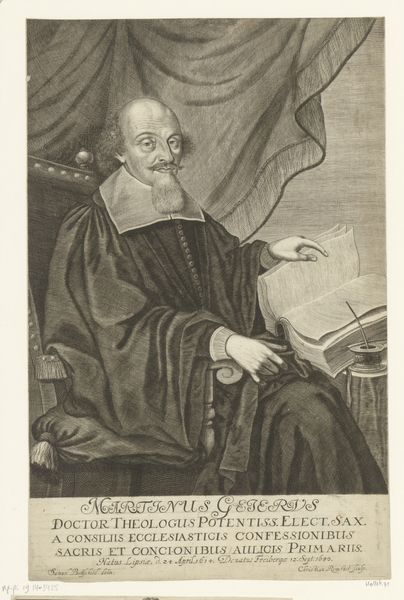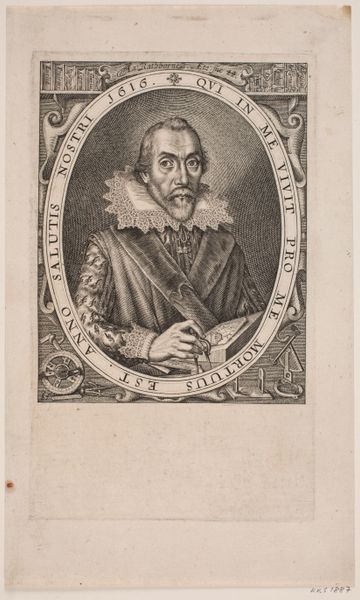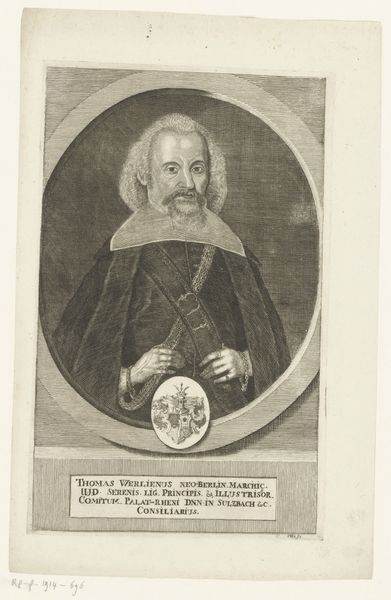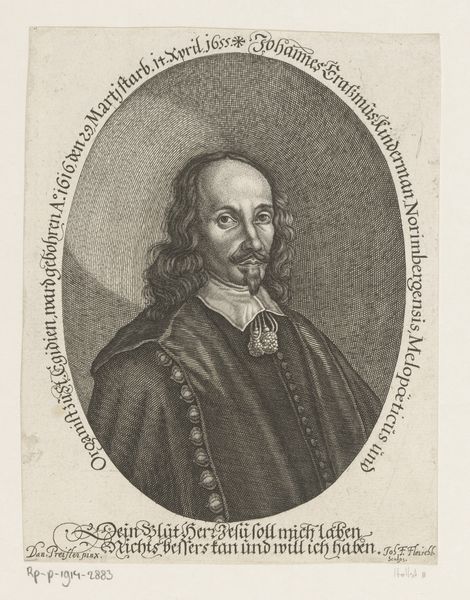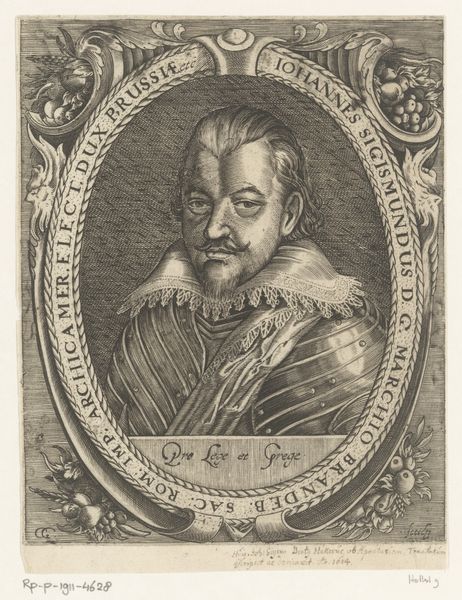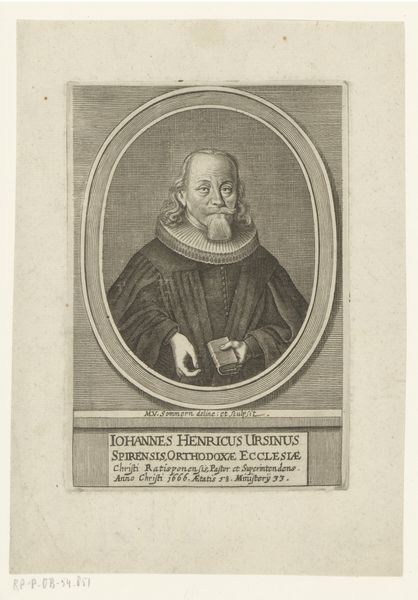
engraving
#
baroque
#
old engraving style
#
caricature
#
portrait reference
#
portrait drawing
#
history-painting
#
engraving
Dimensions: height 187 mm, width 143 mm
Copyright: Rijks Museum: Open Domain
Editor: Here we have "Portret van Johann Weger," an engraving from sometime between 1685 and 1709 by Johann Christoph Boecklin, currently residing at the Rijksmuseum. The level of detail is astounding, especially considering the medium. It feels so... meticulous. What do you see when you look at this portrait? Curator: I see a complex interplay between artistic labor, social standing, and the materiality of printmaking itself. Consider the social context: the sitter, Johann Weger, was clearly a figure of some importance. The act of commissioning an engraving – and the resources required – speaks to a certain level of economic and social capital. How does that manifest itself in the visual language? Editor: Well, there's the elaborate laurel wreath framing him, almost like a medal, and the Latin inscriptions above and below. It gives it a formal, official feeling. Curator: Exactly. The *process* of creating this engraving also reflects this. Think about the time and skill involved in translating a likeness onto a metal plate, and then producing multiple identical prints. Each impression becomes a vehicle for disseminating a very specific image of power and authority to a potentially wide audience. Are we looking at an individual or a symbol of civic importance? Editor: So it's not just a portrait of a man, but a carefully constructed representation of his status and the means available to project that image. The choice of engraving itself is a statement. Curator: Precisely. It highlights how materials and means of production are not neutral. The lines, the texture, all were the result of someone's labor, embodying social meanings. It goes beyond aesthetic judgment. What have we learned, considering both craft and context? Editor: That even in a seemingly straightforward portrait, there's a whole world of social and material history etched into its very surface. Curator: Indeed, transforming our understanding of this visual artifact.
Comments
No comments
Be the first to comment and join the conversation on the ultimate creative platform.
